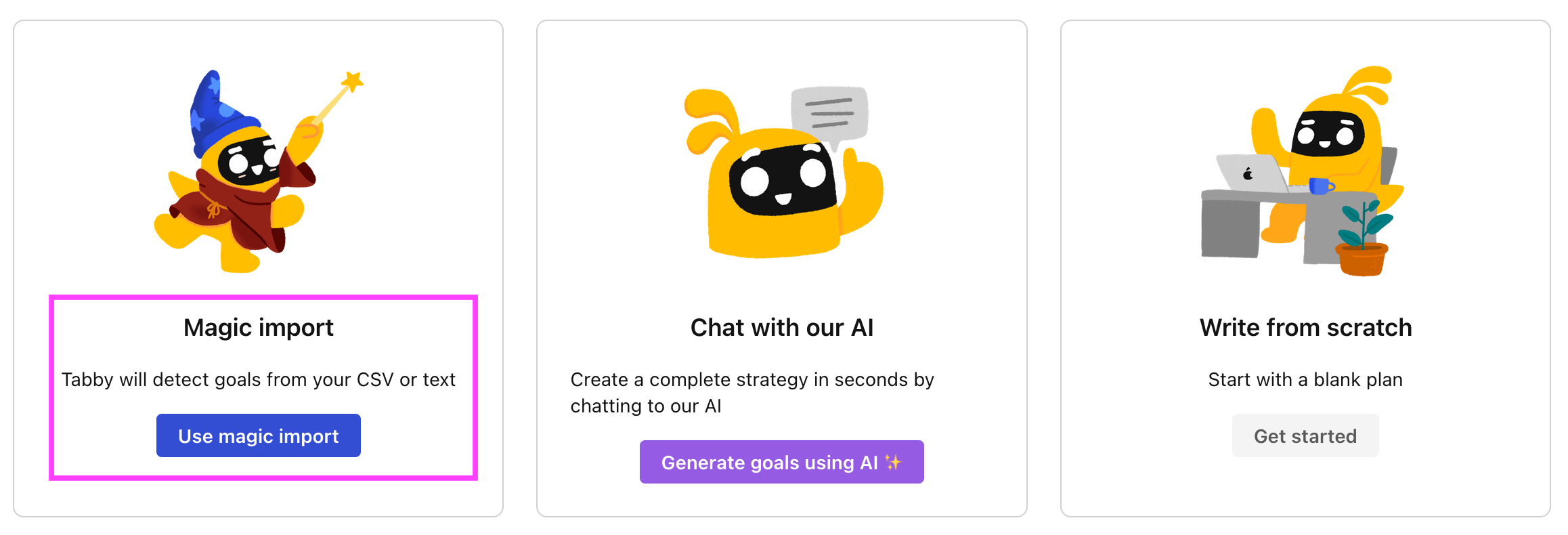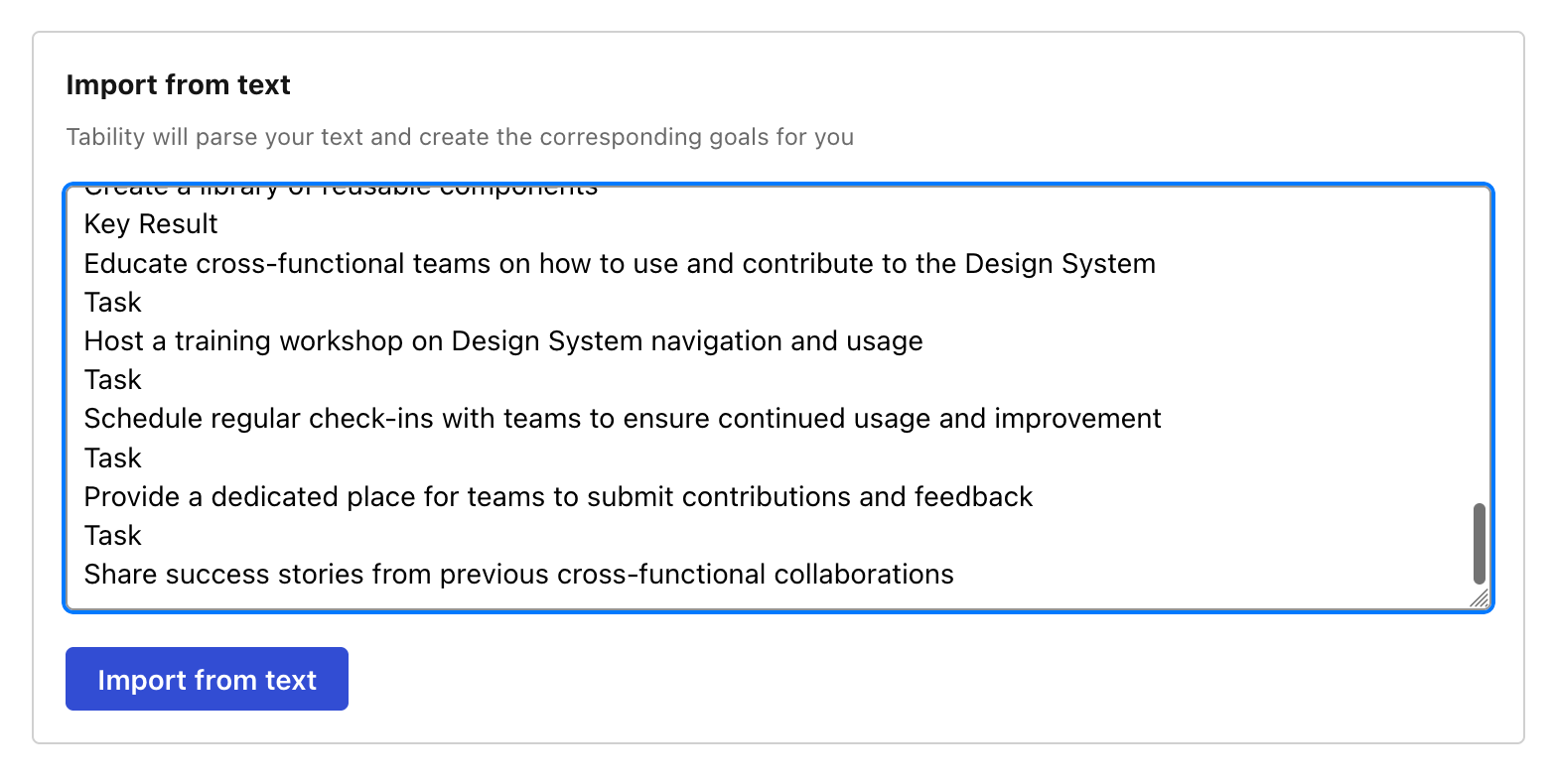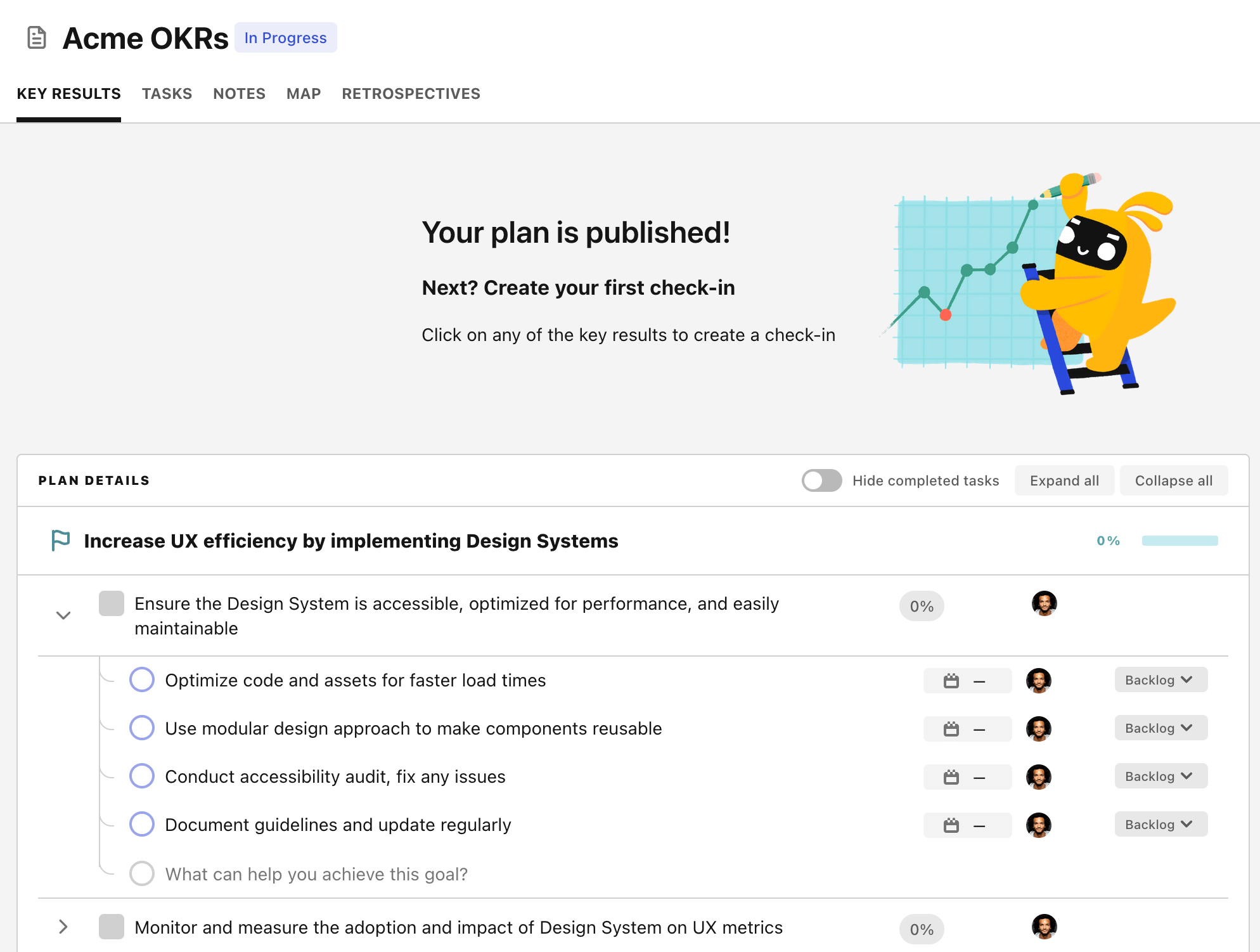OKR template to enhance preventive maintenance of critical infrastructure and equipment
Your OKR template
The next outcome focuses on raising the completion rate of preventive maintenance to 95%. This will be achieved by creating a detailed maintenance schedule, monitoring and adjusting the process regularly, and enhancing staff understanding and conformity to the protocol.
The final outcome targets to elevate the technician training completion to 100% to ensure excellently trained staff. This will be accomplished through regular evaluations and improvements of the training curriculum, providing incentives upon program completion, and tracking technician’s training progress consistently.
Overall, this OKR is dedicated to bettering operational efficiency by minimizing equipment malfunctions and ensuring competent staff. It values continual adaptation and learning to the dynamic nature of the field.
ObjectiveEnhance preventive maintenance of critical infrastructure and equipment
KRReduce equipment downtime by 30%
Offer specialized training programs for operators
Implement regular equipment maintenance schedules
Upgrade equipment to reduce breakdowns
KRIncrease preventive maintenance completion rate to 95%
Implement a detailed preventive maintenance schedule
Monitor and adjust the process regularly
Train staff on its importance and adherence
KRImprove technician training completion rate to 100%
Review current technician training curriculum for effectiveness
Implement incentives upon training completion
Monitor technician training progress regularly
How to edit and track OKRs with Tability
You'll probably want to edit the examples in this post, and Tability is the perfect tool for it.
Tability is an AI-powered platform that helps teams set better goals, monitor execution, and get help to achieve their objectives faster.
With Tability you can:
- Use AI to draft a complete set of OKRs in seconds
- Connect your OKRs and team goals to your project
- Automate reporting with integrations and built-in dashboard
Instead of having to copy the content of the OKR examples in a doc or spreadsheet, you can use Tability’s magic importer to start using any of the examples in this page.
The import process can be done in seconds, allowing you to edit OKRs directly in a platform that knows how to manage and track goals.
Step 1. Sign up for a free Tability account
Go tohttps://tability.app/signup and create your account (it's free!)
Step 2. Create a plan
Follow the steps after your onboarding to create your first plan, you should get to a page that looks like the picture below.

Step 3. Use the magic importer
Click on Use magic import to open up the Magic Import modal.
Now, go back to the OKR examples, and click on Copy on the example that you’d like to use.

Paste the content in the text import section. Don’t worry about the formatting, Tability’s AI will be able to parse it!

Now, just click on Import from text and let the magic happen.

Once your example is in the plan editor, you will be able to:
- Edit the objectives, key results, and tasks
- Click on the target 0 → 100% to set better target
- Use the tips and the AI to refine your goals
Step 4. Publish your plan
Once you’re done editing, you can publish your plan to switch to the goal-tracking mode.

From there you will have access to all the features that will help you and your team save hours with OKR reporting.
- 10+ built-in dashboards to visualise progress on your goals
- Weekly reminders, data connectors, and smart notifications
- 9 views to map OKRs to strategic projects
- Strategy map to align teams at scale